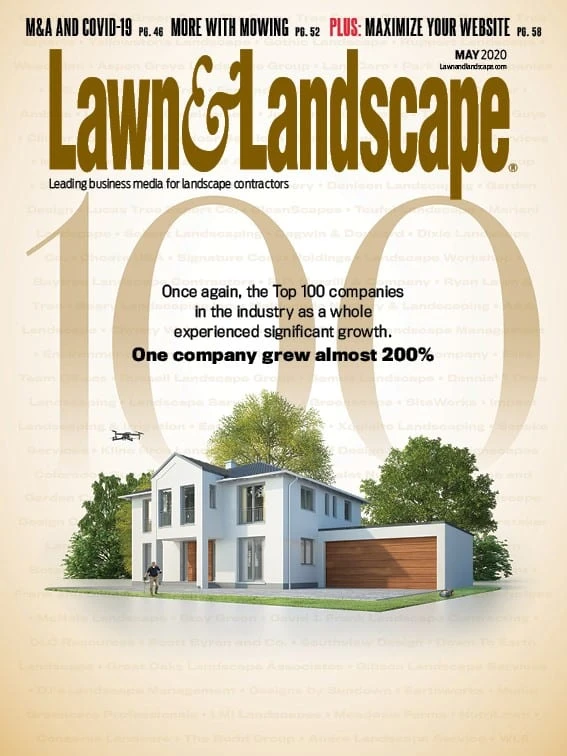

Whether it’s a new company starting out or a well-established one looking to streamline operations, mower attachments can help with efficiency.
Companies don’t have to buy the biggest, most expensive attachments to improve that efficiency, according to Pete McNamara, general manager of Dependable Lawn Care in Blue Island, Illinois, and Ryan Panarese, landscape & snow manager with Constantine Property Management, in Loudonville, New York.
Variety is the spice of life.
McNamara says his inventory includes mulching kits and some other useful tools, including a tow-behind aerator, power rake, catchers, fertilizer spreaders and a tow-behind spraying attachment for pesticide control.
“Most of the implementations we have are attachments for a walk-behind machine where a person could stand on it,” he says. “A lot of the other attachments are for mulching – things you would put on the deck itself to mulch the grass in the summertime.”
Constantine Property Management also utilizes mulching kits quite a bit.

“All of my machines have mulching kits and striping kits on them,” Panarese says. “On our bigger machines, we have a dethatching rake and blower buggy.”
When it comes to choosing an attachment, McNamara says adaptability is key.
“It all depends on how inventive you want to get,” he says. “The more versatile you can be with one piece of equipment, is the way you want to go.”
Getting work done faster is an added benefit of having the attachments on hand.
“It saves us from having to get additional pieces, but it also saves hours,” Panarese says, adding he has a blower attachment to save time on a job. “I don’t have to have a guy out there pushing a push blower.”
“The more versatile you can be with one piece of equipment, is the way you want to go.” Pete McNamara, GM, Dependable Lawn Care
Seasonal supplies.
Panarese says his rake attachments comes in handy for spring cleanups.
“It gets all the organic material that settles in the grass from the winter,” he says. “It gives the lawn a nice, clean appearance.”
McNamara says a catcher and attachments for towing can also be good seasonal tools.
“Obviously, your catcher is another main attachment,” he says. “Basically, it’s what we mostly implement in the springtime. We’re in a suburb of Chicago, so obviously the grass growth changes. In the springtime, the grass has a lot of growth versus the summer when growth is a little more dormant. There’s no way to mulch anything when the grass is wet. It’s just not practical.”
Dependable Lawn Care uses wheel attachments as well.
“We’ve experimented with different types of wheels too,” he says. “They’re making all different kinds to lessen the impact on the turf.”

Eyeing future buys.
Panarese says he’s looking to add more attachments to his fleet.
“We are certainly looking into buying an aerator,” he says. “I’ve got to rent it now. Some of the lawns we have now are pretty big in square footage and using one of those little walk-behind ones is like bringing a spoon to the beach.”
McNamara says that as a landscape maintenance company, he doesn’t need too many attachments.
“What we use here is just to improve upon what the machine is meant to do – mow,” he says. “Up here, you don’t have too much more time to do anything other than mow.”
Do your due diligence.
Panarese and McNamara suggest companies just starting out consider how attachments could help them better provide services.
“The ability to identify what you want to do as far as services will dictate what attachments you could use,” McNamara says. “For a smaller crew, you’re all about volume.”
Panarese says for the companies with smaller crews, the attachments will be a major time saver.
“If it can go on the machine and it costs less than $1,000, by all means, certainly get it. It’ll pay for itself fairly quickly. It’s also not another motorized piece of equipment that you have to store and service,” he says. “Especially for these smaller businesses where it’s just a one-person operation, they don’t need to walk for 14 hours a day. They need to be as efficient as possible.”
Another piece of advice both men have is to do your research before purchasing anything.
“Do your homework and research the piece of equipment,” he says. “Different manufacturers have different things. You might buy a $400 attachment that isn’t feasible for the piece of equipment you have.”
“I look at a couple of things,” Panarese says. “I might think this will be a great piece of equipment to have right this second for a particular job. But once it’s over, did it pay for itself already? Or do I have to sell more to justify having it? Should I just rent it? If it costs me $500 a month to rent and $5,000 to buy, and I need to rent it three to four times a year, then I need to purchase it.”
Get curated news on YOUR industry.
Enter your email to receive our newsletters.
Explore the May 2020 Issue
Check out more from this issue and find your next story to read.
Latest from Lawn & Landscape
- Bobcat Company debuts MT120 mini track loader
- Senske Family of Companies opens new corporate office
- Autonomowus Lawn Company adds robotic mowers to Genan tire recycling plant
- Visterra Landscape Group acquires Cleveland-based H&M Landscaping
- SiteOne names Carrothers VP of agronomic business development
- Batman and business
- Ever-changing landscape of SEO
- Fleetio acquires Auto Integrate, raises $450M in Series D funding





